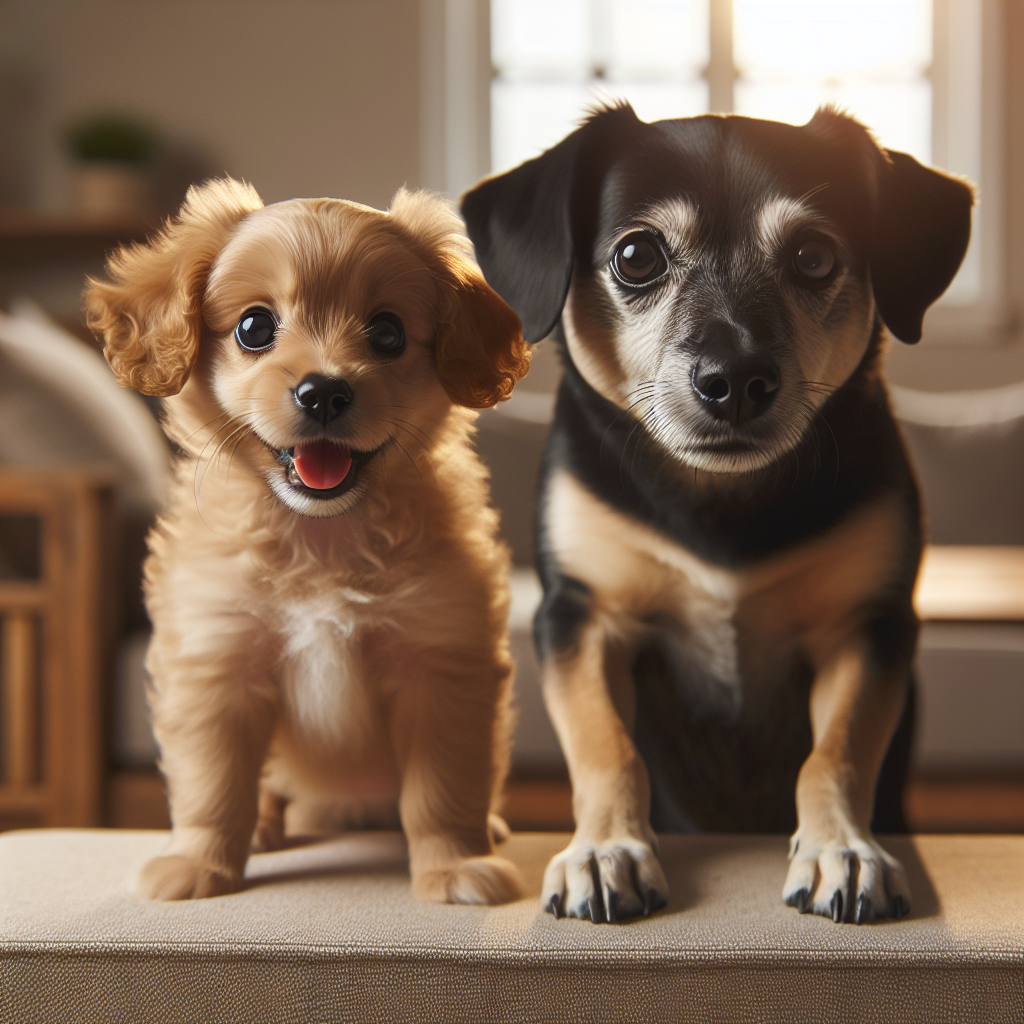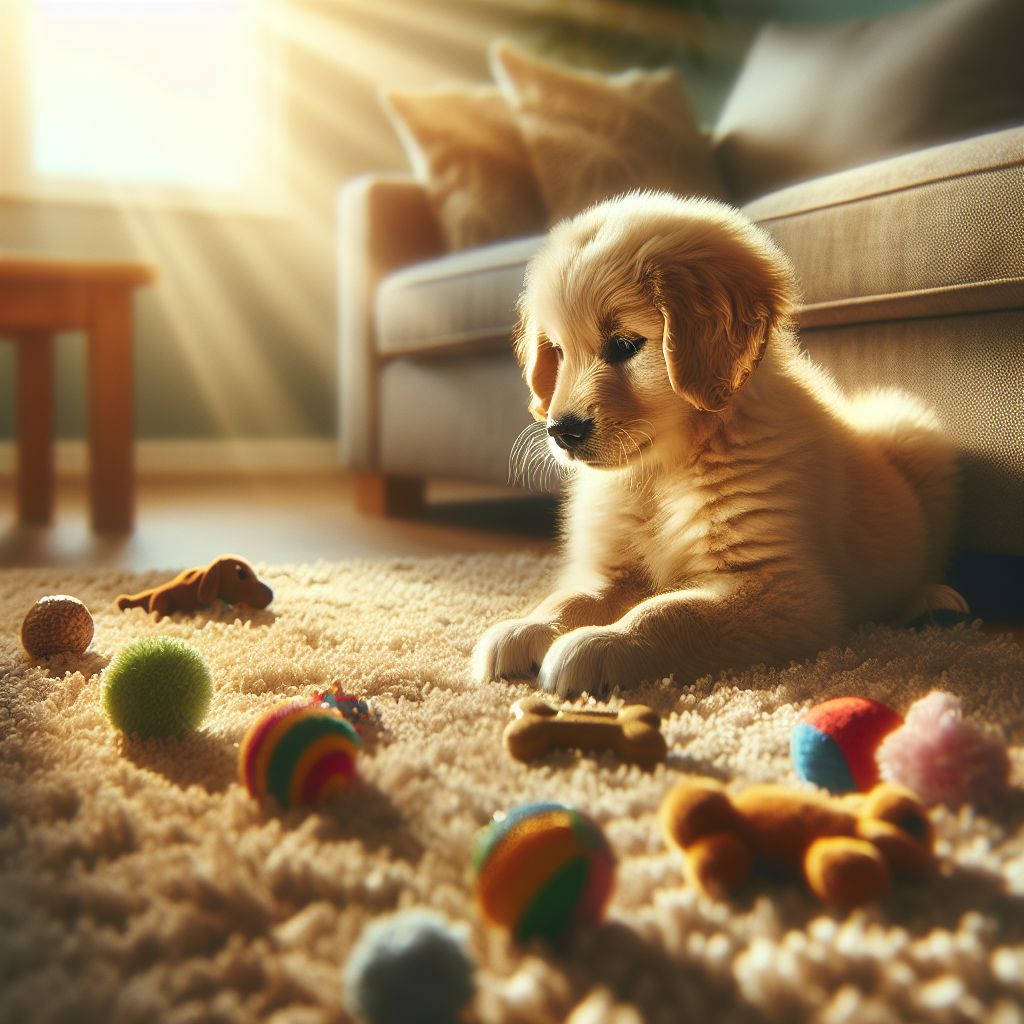How to House Train Your Dog: The Ultimate Guide
Welcoming a new puppy or even an older dog into your home is an exciting experience, but it comes with its own set of challenges, one of which is house training. Learning how to house train your dog effectively is crucial to ensuring a harmonious living environment for both you and your furry friend. This essential part of pet ownership requires patience, consistency, and understanding of your dog’s needs and behavior.
House training is not just about preventing accidents inside the house; it's about establishing communication between you and your dog. When done right, it lays the foundation for a strong and trusting relationship. Puppies, like human toddlers, need guidance to understand where and when it is appropriate to relieve themselves. Older dogs may also require training, especially if they're adjusting to a new home environment.
Before you begin, it's important to set realistic expectations. Every dog is unique, and the time it takes to house train can vary greatly. It's important to be patient and consistent with your training methods. Remember, positive reinforcement is a powerful tool. Rewarding your dog with praise and little treats when they succeed can make the process enjoyable for both of you.
To make the training process even more rewarding, *treat* your furry friend to the joy they deserve with our range of delicious and nutritious dog treats available at Happypup.dog. This can help reinforce good behavior while ensuring their health and happiness.
Understanding Your Dog's Behavior
Before diving into the intricacies of how to house train your dog, it's essential to understand the underlying behaviors that influence your dog's actions. Dogs are naturally curious and social creatures with instincts that drive their behavior. By observing these traits, you can better tailor your training approach to suit your dog's unique needs.
One of the first things to recognize is that dogs are den animals. This means they instinctively seek out a clean and safe place to rest and sleep. This behavior can be leveraged during house training, as dogs naturally avoid soiling their sleeping area. Creating a designated space for them can help reinforce this instinct.
Communication is another critical factor. Dogs primarily communicate through body language and vocalizations. By paying attention to cues like barking, sniffing, or circling, you can often predict when your dog needs to go outside. Recognizing these signals allows you to act swiftly, guiding them to the appropriate spot.
It's also important to note that dogs thrive on routine. Establishing a consistent schedule for feeding, bathroom breaks, and walks can help your dog understand what is expected of them. This predictability not only eases anxiety but also aids in reinforcing positive behaviors.
By understanding these fundamental aspects of your dog's behavior, you can create a supportive environment that facilitates effective house training. This knowledge will empower you to build a stronger bond with your pet, making the training process smoother for both of you.
Effective House Training Techniques

Once you've grasped the basics of your dog's behavior, it's time to implement some effective house training techniques that will streamline the process. Consistency and patience are key components to successfully house training your dog.
One of the most popular and successful techniques is positive reinforcement. This involves rewarding your dog with treats, praise, or playtime whenever they exhibit the desired behavior, such as going to the bathroom outside. Positive reinforcement helps your dog associate good behavior with rewards, making them more likely to repeat it.
Another technique is crate training. This method uses your dog's natural den instincts, as they prefer not to soil their sleeping area. When implemented properly, crate training can create a safe, comfortable space for your dog and encourage them to hold their bladder until they're let outside. Remember, it's crucial to never use the crate as a form of punishment, as this can lead to anxiety and aversion.
Establishing a consistent routine is another effective strategy. Dogs thrive on predictability, so setting regular times for meals, bathroom breaks, and walks can help them anticipate when it's time to go outside. Over time, your dog will become accustomed to the schedule, reducing the likelihood of accidents.
Finally, be sure to use verbal cues when training. Phrases like "go potty" or "do your business" can eventually signal to your dog what is expected during bathroom breaks. Consistent use of these cues, paired with the techniques above, will enhance your dog's learning and improve their responsiveness.
By employing these strategies, you'll be better equipped to teach your dog how to behave appropriately indoors, fostering a harmonious living environment for both of you.
Creating a Consistent Routine

Establishing a consistent routine is a cornerstone of successful house training and an essential part of understanding how to house train your dog. Dogs, much like humans, are habitual creatures that thrive on predictability. A well-structured routine not only provides them with a sense of security but also helps reinforce desired behaviors.
Begin by setting a schedule for your dog's daily activities, including feeding times, bathroom breaks, play sessions, and bedtime. Consistent feeding times lead to regular bathroom habits, making it easier to predict when your dog will need to go out. Typically, puppies require more frequent bathroom breaks, often after meals, playtime, and naps.
Integrating regular walks and outdoor time into the routine is also vital. Taking your dog out at the same times each day can help them develop an internal clock, reducing the likelihood of indoor accidents. Make sure to reward them with praise or treats when they eliminate outside, reinforcing the connection between the routine and the desired behavior.
Additionally, pay attention to your dog's unique signals and adjust the routine as needed. Some dogs may need more frequent outings, especially during the early stages of training or after changes in diet or environment. Flexibility within the routine can ensure that your dog's needs are met while maintaining the overall structure.
By sticking to a consistent schedule, you not only facilitate the house training process but also build a strong bond with your dog based on trust and reliability. This routine will lay the foundation for a well-behaved pet, making day-to-day life more enjoyable for both of you.
Dealing with Common Challenges

As you delve deeper into understanding how to house train your dog, you'll likely encounter a few common challenges along the way. It's essential to address these issues with patience and persistence, ensuring that setbacks don't derail your progress.
One frequent challenge is accidents inside the house. While frustrating, remember that these are a natural part of the learning process. When they occur, calmly clean the area without drawing too much attention to the mishap. Avoid punishing your dog, as this can create fear and anxiety, potentially exacerbating the problem. Instead, reinforce positive behavior by rewarding your dog when they relieve themselves outside.
Another challenge is dealing with a dog that doesn’t signal their need to go out. Some dogs may not naturally alert their owners. In such cases, training them to use a bell or a specific spot near the door can be beneficial. Consistently encourage your dog to use the signal before taking them out, and over time, they'll associate the action with the outcome.
For those with puppies or newly adopted dogs, separation anxiety can also be a hurdle. Dogs experiencing anxiety may have accidents when left alone. Gradually increasing the duration of your absences can help your dog acclimate. Providing them with comforting items, such as a favorite toy or a piece of clothing with your scent, can also alleviate stress.
By understanding and proactively addressing these challenges, you can foster a smoother house training experience. Remember, persistence and positive reinforcement are key to overcoming these obstacles and ensuring a happy, well-trained dog.
Maintaining Progress and Patience

Once you've navigated the initial hurdles of how to house train your dog, maintaining progress becomes crucial. Consistency remains your most powerful tool in ensuring that your dog's newly acquired habits become second nature.
To maintain progress, continue to adhere to a schedule that includes regular potty breaks, especially after meals, playtime, and naps. Praise and reward your dog for their successes with enthusiasm. This positive reinforcement not only cements good behavior but also strengthens the bond between you and your furry companion.
It's also important to remain patient. Even well-trained dogs can have occasional lapses, especially during times of stress or change. If accidents occur, revisit the basics of training, and reinforce the routines that have worked in the past. Remember, a calm and patient approach encourages your dog to succeed.
In addition to consistency, keeping the training environment positive and enriching can help sustain good behavior. Providing mental stimulation and regular exercise can reduce anxiety and prevent behavioral issues that might lead to setbacks.
As you continue on this journey, treat your furry friend to the joy they deserve with our range of delicious and nutritious dog treats. These treats are not only a great reward for your dog's efforts but also a testament to the progress you've made together.






